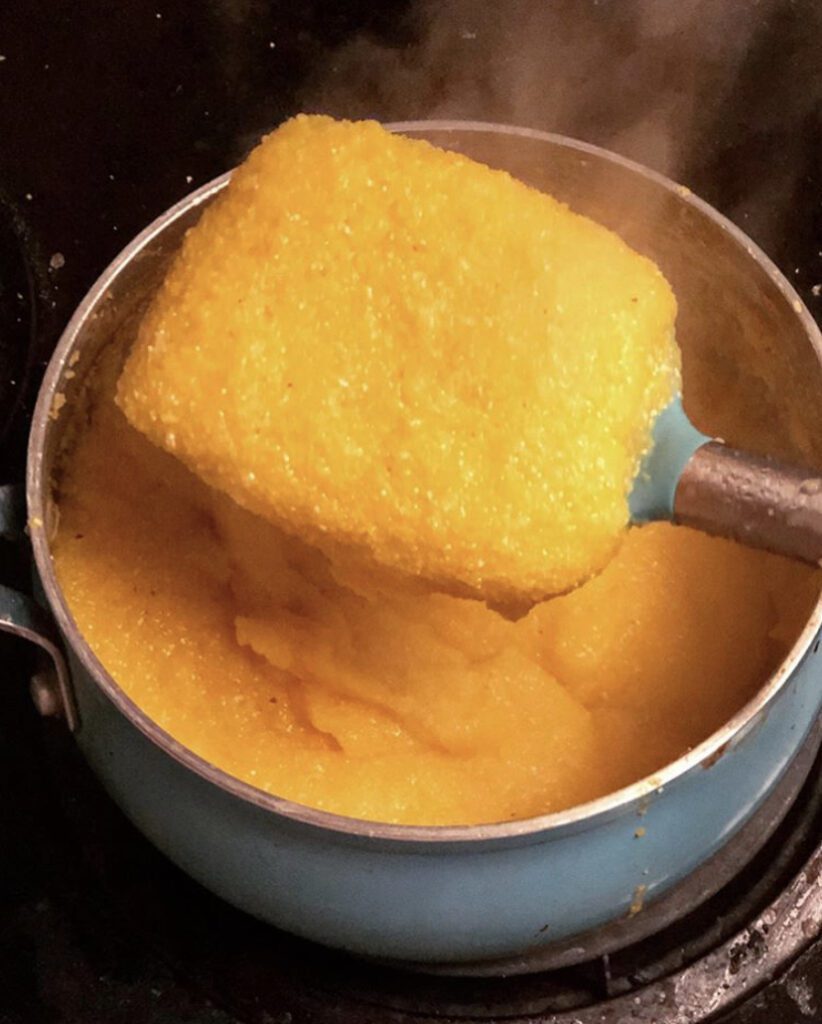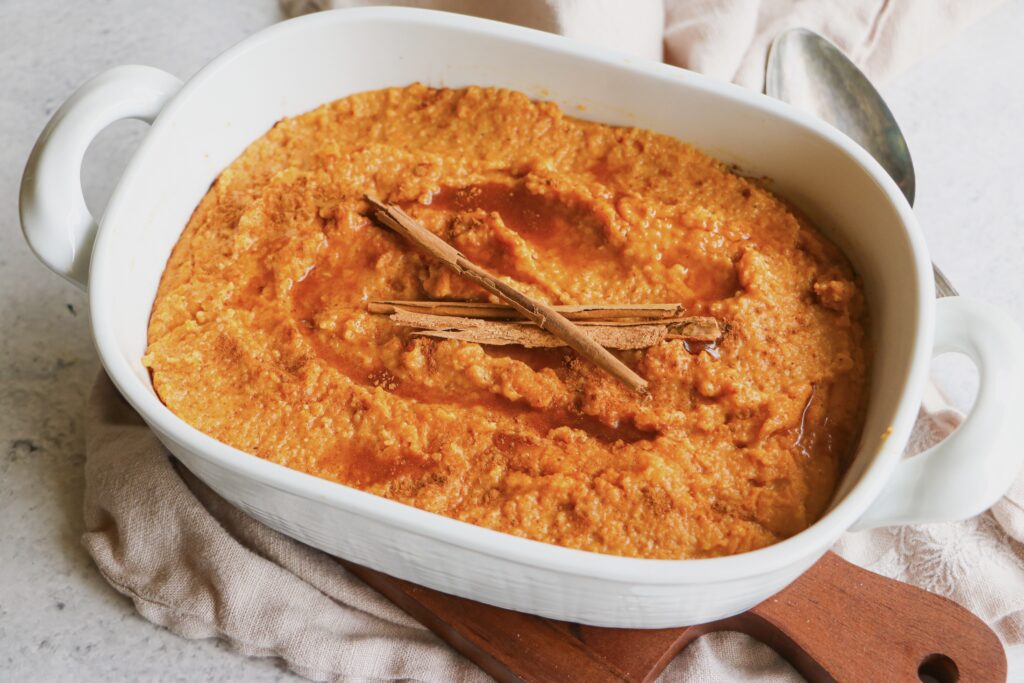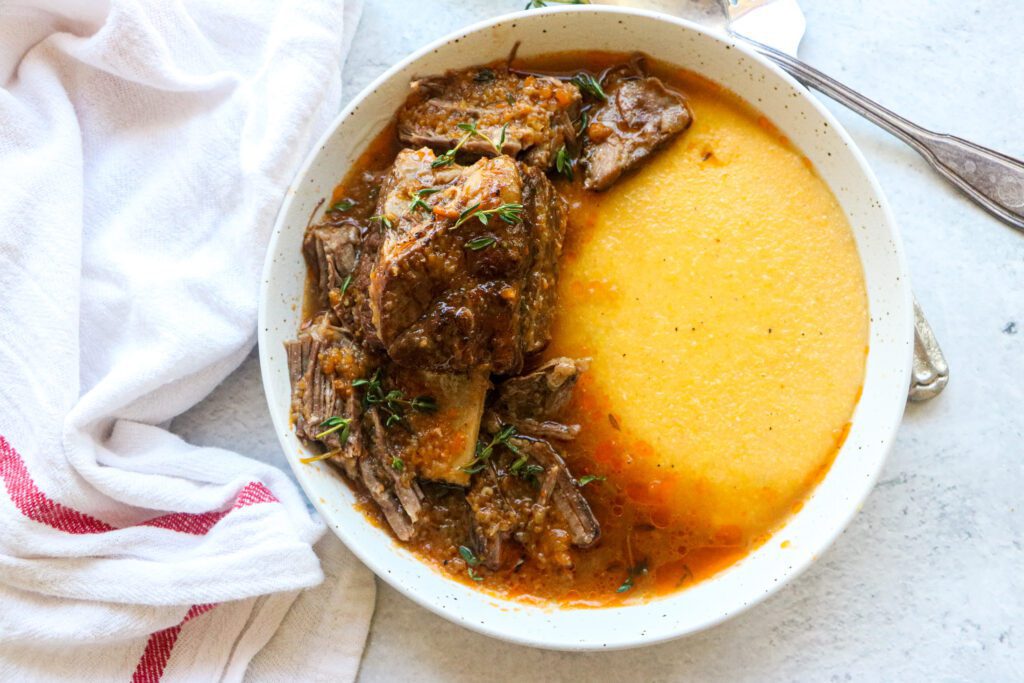
Sweet vs Savory Grits
A Closer Look at the Age-Old Debate
When it comes to grits, people have a lot of opinions. Some only eat stone ground cooked low and slow while others prefer a quick batch of finely ground instant grits. Some like to start their day with a heaping bowl of warm grits while others love it as a delicious dinner choice topped with shrimp or other proteins. There are so many ways to prepare and eat this versatile pantry staple. Yet, the question remains: what is the right way to season grits – sweet or savory? A look back at history shows us that the preference of sugar versus no sugar grits may be based on geographic location, background and even age demographics, however the answer is not exactly clear cut. In this post we explore the origins of grits and the evolution of their flavors in American culture as well as a few theories as to where the addition of salt and sugar come into the picture.
Grits and Its Savory Beginnings
When looking back at the humble beginnings of grits, it appears that most of its early preparations were savory. Like cornbread, a form of grits has been around since the 16th century. As we discussed in our Culture of Cornbread blog post, corn was the main staple crop in the New World and cooking the ground corn with water to a porridge-like consistency originated with the Native Americans and later shared with British settlers (NPR). From there, the prevalence of corn and the ease of cooking grits gained popularity and spread across the region.

As time went on and more settlers established themselves in the Americas, grits also became part of the weekly rations of enslaved Africans in the Lowcountry of South Carolina specifically in the Gullah Geechee Community. The rations were often paired with shrimp that could be caught by hand in the area to create a more substantial meal, creating the iconic Southern dish shrimp and grits. (Southern Living) The dish became a staple in the diet of the enslaved Africans and onward after the Civil War. The first printed version of the shrimp and grits recipe appeared in the 1930s in Two Hundred Years of Charleston Cooking cookbook compiled by Blanche S. Rhett. The recipe was entitled ‘shrimp and hominy’ and is credited to Rhett’s African American butler, William Deas, who at then 78-years-old, had been eating the dish every morning during shrimp season for a long as he could remember. (The Local Palate) In 1985 Bill Neal, chef at Crook’s Corner in Chapel Hill, North Carolina, shared his recipe for shrimp and grits in the New York Times, bringing attention to the dish on a national level and thereby helping the recipe earn a place on fine dining menus across the country. (Southern Living)
Through the years, variations of shrimp and grits as well as other grit recipes continued to be introduced, primarily due to the simplicity of cooking grits and the need for only a few ingredients such as butter and salt to add flavor. Today, savory grits continue to be a pantry staple in the American South and continue to gain traction in the North in both fine dining restaurants, diners, and even home kitchens as more discover their versatility and deliciousness.
The Sweeter Side of Grits

While history shows that grits started savory, the timeline of when sweet grits appeared is not as clear cut. Some theories point to sugar coming into the picture after the Civil War and is a preference in the North while savory grits are eaten in the South. Sweet grits are also sometimes attributed to those who moved away from the South during the migrations following the War and their descendants moving forward. (EBONY) While there is a group partial to sweet grits, tastes and food trends continue to evolve, creating new flavor profiles and favorites.
In the end, preferences often seem to be based on the flavors you grew up with and their nostalgia. Maybe your mom always cooked sweet grits every morning before breakfast, or your grandmother made your favorite shrimp and grits each time you visited her. While there is no straightforward answer why some people prefer savory grits and some prefer sweet, the bottom line is there is no right or wrong way to eat grits and the way you enjoy them is a matter of your own taste.
Orange Corn Grits
Whether you’re on #TeamSavory or #TeamSweet, the nutty buttery flavor of Professor Torbert’s Orange Corn grits is a versatile that is beloved by all no matter how you prepare it!

On the savory end, our Shrimp & Grits recipe is as classic as it gets. This hearty and flavorful dish is perfect for breakfast or any time of day! Other favorite savory recipes include our Grits Breakfast Bowls to fuel your morning and our Braised Short Ribs with Cheesy Grits for the ultimate comfort food dinner. If you’re looking for something on the sweeter side our Pumpkin Spice Grits make a delicious breakfast or dessert that incorporates the tastes and smells of the holidays. Grab a bag today on our website and get cooking!
Check out these additional resources for more information:
Shrimp and Grits: A History – The Local Palate
Saving The Story Of Grits, A Dish Born Of Poverty Now On Fine-Dining Menus : The Salt : NPR
Should Grits Be Savory or Sweet? Let’s Settle This Age-Old Debate (southernliving.com)
Grits: Sweet or Savory. A Food Historian Settles Debate (ebony.com)
